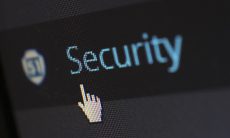This article, authored by our Senior Advisor David Schlesinger kicks off a special series titled “Creating Resiliency During the COVID-19 Crisis.”
This series will feature articles, podcasts and additional resources from our Consultants Collective member consultants, advisors and coaches, whose experience and expertise includes risk and change management, Asia, China, offshoring, leading distributed global teams, managing crises and internal communications, deploying and managing online collaboration tools that enable people to work together virtually, developing new models, as well as expertise in innovation and design-thinking, work-life integration — and more — all of which uniquely positions Consultants Collective to serve its clients during this time. We hope this series is a valuable resource to you and your organization as you tackle the challenges presented by this global public health crisis. If we can provide additional help and support through our executive consulting, advisory and coaching services, please contact us.
COVID-19 may be a new, scary name in medicine, but for managers, it represents a whole new playbook as well.
- Travel budgets – cut
- Meetings and conferences – canceled
- Quarantines – imposed
- Working from home – increasing
And yet, the work needs to get done and just as importantly, ties within the company community need to be strong and get strengthened. YOUR leadership needs to shine, even if many of your employees won’t see you in person for the next six, 12 or even 18 months – travel patterns and meeting patterns never bounce back quickly after a cutback.
I have personal experience with remote managing. As Editor-in-Chief of Reuters, one of the world’s largest news organizations, I had 2,500 journalists in 80 different locations around the world, with scores of different nationalities and mother tongues reporting to me. “Managing by walking around” everywhere was obviously an impossibility; instead I tried to do a lot of “Managing by flying around”, but there were real limits to that too. Time, money, health, family – all these kept me from being in continual motion. And then too there were always forced cutbacks even to the schedule I may have wanted: sudden budget issues, or, more to the point today, the Swine Flu Pandemic of 2009-10 sometimes kept me grounded.
Here are a few things I learned:
You must stay visible and OVER-communicate. Particularly in times of danger or uncertainty employees read the worst into the situation if they don’t hear from their leaders. Use every tool in your arsenal: written notes, a company intranet, teleconferences, video conferences.
Intimacy trumps your convenience. A blast telephone call to 2,500 has much, much less power than a personal call to just the staff on the West Coast or to just the employees in the Hong Kong office. And on that note, play to the staffs’ time zones, not your own.
Nothing is more powerful than interactivity. Don’t just talk; make sure the communication is two way. In a half-hour call, leave 15-20 minutes for Q&A.
Make sure the shy have a voice. Set up mechanisms to gather questions and comments from people who might not want to speak up. Use a messenger chat line, encourage written submissions in advance, have champions in each office who can help gather feedback or encourage participation.
And authenticity and honesty count for everything! Encourage and answer all questions. Don’t censor. Say if you don’t know. Avoid clichés and jargon. Speak like a normal human being who just happens to be the boss.
Know your key messages. Just have a few: perhaps one about the current state of the business and your current strategy, one about the external environment (i.e. how the company is managing the COVID-19 process), one about what you think about how employees are managing and what your expectations are for them.
Get used to this – it is likely the world will not return to normal in 2020 and probably well into 2021. Who knows? This crisis could just be the right opportunity to relaunch yourself with a new leadership style.









